October 31, 2010 2:03 PM
by samzenpus
How Much Math Do We Really Need?
Read more of this story at Slashdot.
Art Trembanis
Read more of this story at Slashdot.
http://www.oceanbytes.org/2010/10/31/how-to-construct-a-global-visualization-lab/
Art Trembanis
CSHEL
Department of Geological Sciences
University of Delaware
http://cshel.geology.udel.edu
It's been a couple days since I have made a post, things have been quite busy here in Bonaire.
On Thursday I went diving with a group and an instructor named Albert on the eastern side of the island in Lac Bay at a site called Cai. Normally diving is not possible on the eastern side to to large waves and strong currents, however this time of year the waves are generally smaller, which makes diving easier. This was a fairly shallow dive, reaching a maximum depth of 59ft, which allowed me to accumulate a bottom time of 74 minutes. I saw my first sea turtle at this location. It was too far away for me to get a pictures, but was very neat.
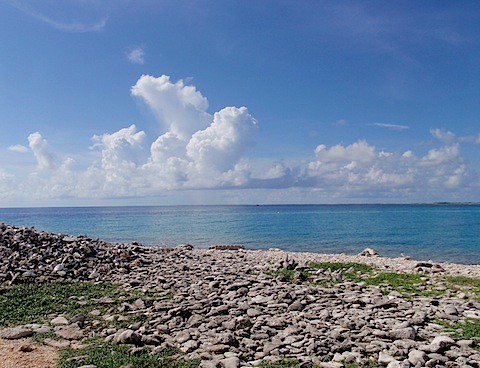
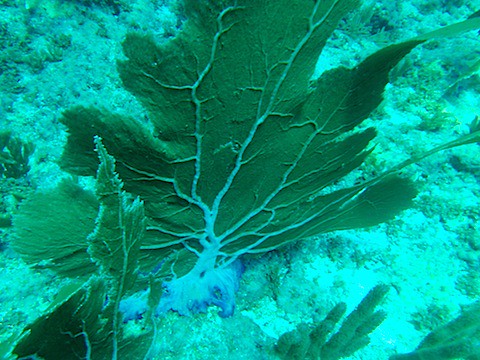
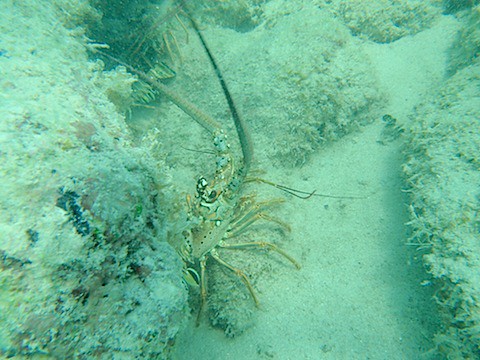
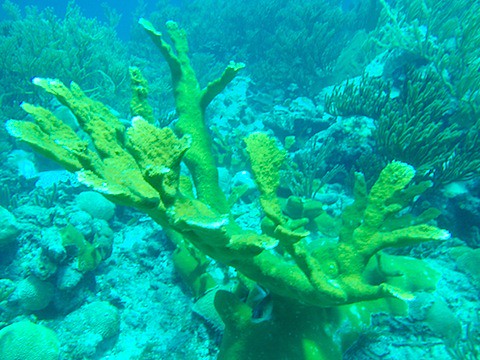
I met a man, name Jaap, from Holland, on this excursion that was here with his non-diving wife and was looking for a buddy. Him and I paired off and went on to do another dive in the afternoon at the far northern end of the island at Nucove. This was one of the nicest locations I have been to so far. The coral was fairly broken-up in the shallower areas, but was quite lush and vibrant in the deeper waters.
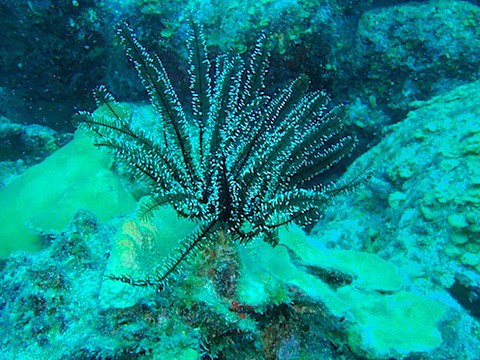
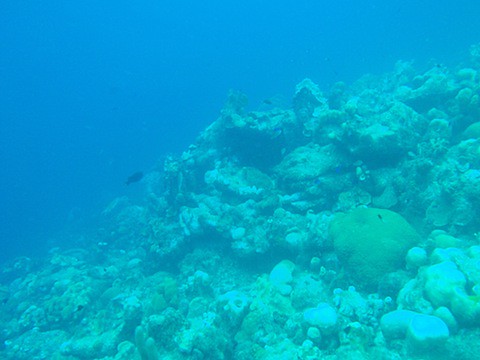
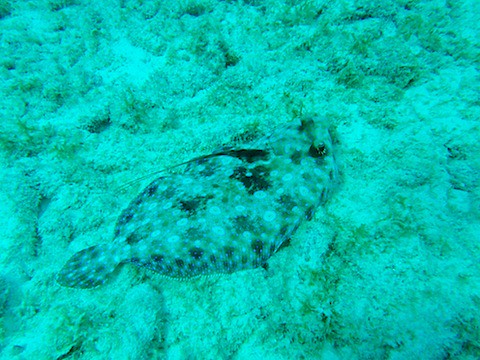
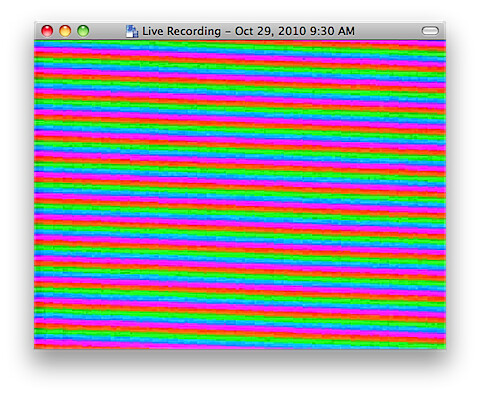


Read more of this story at Slashdot.
Art Trembanis
CSHEL
Department of Geological Sciences
University of Delaware
http://cshel.geology.udel.edu
From Google Earth
http://feedproxy.google.com/~r/GoogleEarthBlog/~3/ipgYaVV-4x4/panoramio_is_adding_photos_from_the.html
Art Trembanis
CSHEL
Department of Geological Sciences
University of Delaware
http://cshel.geology.udel.edu

This harrowing t-shirt cannon was built by Team 254 Robotics of Bellarmine College Prepatory of San Jose, California with the help of NASA Ames Robotics. It weighs 160 pounds, can shoot over 200 t-shirts per tank, has a range of upwards of 150 yards, and packs a rate of fire of 3 shirts a second. Check out the build notes if you want to learn more.
Read the Full Story » | More on MAKE » | Comments » | Read more articles in Robotics | Digg this!
Art Trembanis
CSHEL
Department of Geological Sciences
University of Delaware
http://cshel.geology.udel.edu
http://udbonaire2010.blogspot.com/2010/10/klein-bonaire.html
Art Trembanis
CSHEL
Department of Geological Sciences
University of Delaware
http://cshel.geology.udel.edu
Art Trembanis
CSHEL
Department of Geological Sciences
University of Delaware
http://cshel.geology.udel.edu
Art Trembanis
CSHEL
Department of Geological Sciences
University of Delaware
http://cshel.geology.udel.edu
Art Trembanis
CSHEL
Department of Geological Sciences
University of Delaware
http://cshel.geology.udel.edu
http://blog.makezine.com/archive/2010/10/on_the_care_and_feeding_of_ideas.html
Art Trembanis
CSHEL
Department of Geological Sciences
University of Delaware
http://cshel.geology.udel.edu

Life-size monopoly house translation below...
An Te Liu is 1967 in Tainan, Taiwan to the world. Prior to his artistic career, he studied architecture and art history. Today he lives and works in Toronto, Canada. His installations and sculptures are concerned mostly with the themes of cleanness, safety and functionality. They are often made of industrially manufactured devices, transferred to the artist in the changing contexts.Read the Full Story » | More on MAKE » | Comments » | Read more articles in Arts | Digg this!
Steve Coast, founder of OpenStreetMap, is going to doing some authoring for us on this unique, editable world map project. Steve started OSM in 2004 and has been deeply involved in it ever since. He lives in Denver with his wife, where he also enjoys hang gliding and collecting hammers. - Gareth Branwyn

Maps are not immune to your DIY impulses, and like any form of making, they suck you in with their combination of in- and outdoor activities, with old and new ways of capturing data, and with the joys of accomplishing something yourself.
Let's start with the problem. Maps today are typically old, wrong, and expensive. As soon as you've made a map, it's already changed, and you have to go out and start fixing it. Someone has changed a road name or closed a street. That makes maps wrong, and increasingly wrong as they get older. They're also expensive and hard to license because of the upfront cost in mapping a country is usually so high that it only makes sense for a couple of companies to try it, and they have to recoup their losses.
This should remind of you of Encyclopedia Britannica and the rise of Wikipedia. Old and broken? Check. Expensive? Check. Hard to license? Check.
Hence OpenStreetMap (OSM). OSM is the openly-licensed map of the world that anyone can contribute to. If you want to fix or add a street, you can. Want to add a hiking or ski trail? No problem. We're as open-ended as you are.
How does it work on the ground? Well, you take some GPS traces by walking your favorite trail and collect points of interest along the way. You might record the name of a creek, the speed limit of the freeway you drive there on, or the location of a water fountain. How you record this is up to you, paper and pen is just as good as camera shots or voice recording into a Dictaphone. Then, using a variety of open tools on your desktop or on the site itself, you literally draw your data on to the map. But be careful, it's addictive!
OpenStreetMap is more than just the map -- it's a vibrant community of over 300,000 collaborators from around the world. Regular mapping events (mapping parties) are organized, where newbies are shown how to map, and we have a global conference which will be in Denver in 2011.
If you want to find out more about OSM, there's an extensive wiki, blog, and help forums. So take a look at the map in your area and see what needs to be fixed, it's easier than you think! And, of course, for bonus points, spread the word at your local maker/hacker group.
Read the Full Story » | More on MAKE » | Comments » | Read more articles in Computers | Digg this!
Art Trembanis
CSHEL
Department of Geological Sciences
University of Delaware
http://cshel.geology.udel.edu
In a few days Bryan sets off for Bonaire and here is the link to the blog he will be keeping of his journey.
Bon bini!!
Art Trembanis
CSHEL
Department of Geological Sciences
University of Delaware
http://cshel.geology.udel.edu
Read more of this story at Slashdot.
Via Nature comes this amazing video of an x-ray trip through a barnacle-encrusted lump from a 17th century shipwreck. It reveals the workings of a very sophisticated, gorgeous watchwork mechanism inside. The researchers (from National Museums Scotland in Edinburgh) who used this x-ray technology are excited about the prospects of using it on future, similarly encrusted underwater finds.
What makes a 300-year-old pocket watch tick?

Wired and others are reporting that Benoît Mandelbrot, the mathematician and father of fractal geometry, has passed away, just shy of his 86th birthday. On GeekDad, Matt Blum writes:
I had the rare and amazing privilege of hearing Mandelbrot speak when he came to visit my high school about 20 years ago. Even at my science-and-technology high school, most of the students didn't know much about Mandelbrot, but I'd been fascinated by fractals for years and had brought a copy of his seminal work The Fractal Geometry of Nature for him to autograph, and we chatted for a few minutes. I was a bit starstruck -- I was 16 or 17 at the time -- but I recall that he asked me what kind of fractal-related work I'd done, and showed genuine interest when I told him that I'd played around a lot with the Mandelbrot Set and some variations on the Sierpinski Gasket. In retrospect, I realize this could not possibly have been of much interest to him, but he took a few minutes to make me feel like an intelligent human being because a mathematical genius wanted to hear about what I was working on.

Here's a fun video for Jonathan Coulton's song "Mandelbrot Set" by Pisut Wisessing:
As the lyrics to the song say: "He saw that infinite complexity could be described by simple rules." And for that, and many other of his ideas and discoveries, he will be remember as a giant of science.
"He Gave Us Order Out of Chaos" -- R.I.P. Benoît Mandelbrot, 1924-2010
Read the Full Story » | More on MAKE » | Comments » | Read more articles in Announcements | Digg this!Read more of this story at Slashdot.
Recently, my colleague Rob Comer and I were talking about how to write out a number, in decimal, so that if it were read back into MATLAB, would retain its full precision. The question is how many digits to write out. The number depends on several things, including the datatype the value is stored in. In addition, it may depend on the precision of the value - i.e., was it data collected during an experiment in which only two significant figures were recorded? Today I'll post about the solution Rob and I came up with for choosing the number of digits so if you write out the data as a string, you can read it back in to MATLAB with full precision retained.
Let's first create some values, both single and double versions of pi.
format long g dblpi = pi snglpi = single(pi)
dblpi = 3.14159265358979 snglpi = 3.141593
To figure out the number of digits to print, we need to know what the floating point accuracy, sometimes called eps for the number of interest.
eps(snglpi) eps(dblpi)
ans = 2.384186e-007 ans = 4.44089209850063e-016
As makes sense, we can see that the accuracy of the single precision value is larger than that for the "equivalent" double precision value. That means that the number next closest to the single precision value is farther away than the number next closest to the double precision value.
We can use eps(x) to help us figure out how many digits to print after the decimal place. First find total number of digits, base 10:
log10(eps(snglpi)) log10(eps(dblpi))
ans = -6.62266 ans = -15.352529778863
To get to a positive number of digits, simply negate the results.
-log10(eps(snglpi)) -log10(eps(dblpi))
ans = 6.62266 ans = 15.352529778863
And round up to get make sure we don't miss any accuracy.
ceil(-log10(eps(snglpi))) ceil(-log10(eps(dblpi)))
ans = 7 ans = 16
Let's convert the results to a string. We are taking advantage of the ability to control the number of digits using * in sprintf.
snglpistr = sprintf('%.*f', ceil(-log10(eps(snglpi))), snglpi) dblpistr = sprintf('%.*f', ceil(-log10(eps(dblpi))), dblpi)
snglpistr = 3.1415927 dblpistr = 3.1415926535897931
Now we've captured each value so if written out as a string, and read back into MATLAB, the accuracy is preserved.
Taking what we know for finding the number of digits, let's make a function that we can use to test it out.
digits = @(x) ceil(-log10(eps(x))); printdigs = @(x) sprintf('%.*f', digits(x), x);printdigs(pi) printdigs(2/3) printdigs(1000*pi) printdigs(pi/1000)
ans = 3.1415926535897931 ans = 0.6666666666666666 ans = 3141.5926535897929 ans = 0.0031415926535897933
Rob created the necessary magic for getting rid of trailing zeros after the decimal point, while leaving at least one digit to the right of the decimal.
x = 1/2000 str = printdigs(x) strout = stripzeros(str)
x = 0.0005 str = 0.0005000000000000000 strout = 0.0005
Let's try some more values. First create a function to help us again.
strippedStringValues = @(x) stripzeros(printdigs(x)); vals = [ 100/289, -1/17, 1/2000, 0, 500 -200, 123.4567] for k = vals strippedStringValues(k) end
vals = Columns 1 through 2 0.346020761245675 -0.0588235294117647 Columns 3 through 4 0.0005 0 Columns 5 through 6 500 -200 Column 7 123.4567 ans = 0.34602076124567471 ans = -0.058823529411764705 ans = 0.0005 ans = 0.0 ans = 500.0 ans = -200.0 ans = 123.4567
Here's the magic code for stripping the zeros, for those who are interested.
dbtype stripzeros1 function str = stripzeros(strin) 2 %STRIPZEROS Strip trailing zeros, leaving one digit right of decimal point. 3 % Remove trailing zeros while leaving at least one digit to the right of 4 % the decimal place. 5 6 % Copyright 2010 The MathWorks, Inc. 7 8 str = strin; 9 n = regexp(str,'\.0*$'); 10 if ~isempty(n) 11 % There is nothing but zeros to the right of the decimal place; 12 % the value in n is the index of the decimal place itself. 13 % Remove all trailing zeros except for the first one. 14 str(n+2:end) = []; 15 else 16 % There is a non-zero digit to the right of the decimal place. 17 m = regexp(str,'0*$'); 18 if ~isempty(m) 19 % There are trailing zeros, and the value in m is the index of 20 % the first trailing zero. Remove them all. 21 str(m:end) = []; 22 end 23 end
Are you able to just use the default printing from MATLAB for your values? Do you use disp, leave off the semi-colon (;), use one of the *printf functions? What customizations do you need to make to print out values? Let me know here.
Get the MATLAB code (requires JavaScript)
Published with MATLAB® 7.11